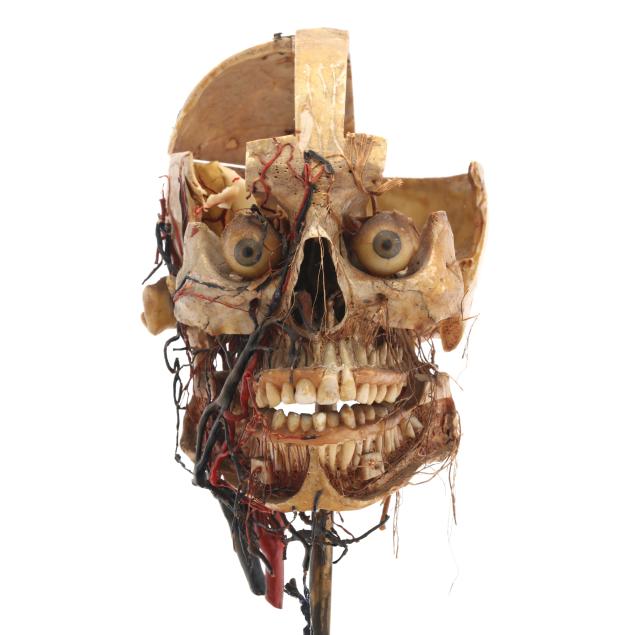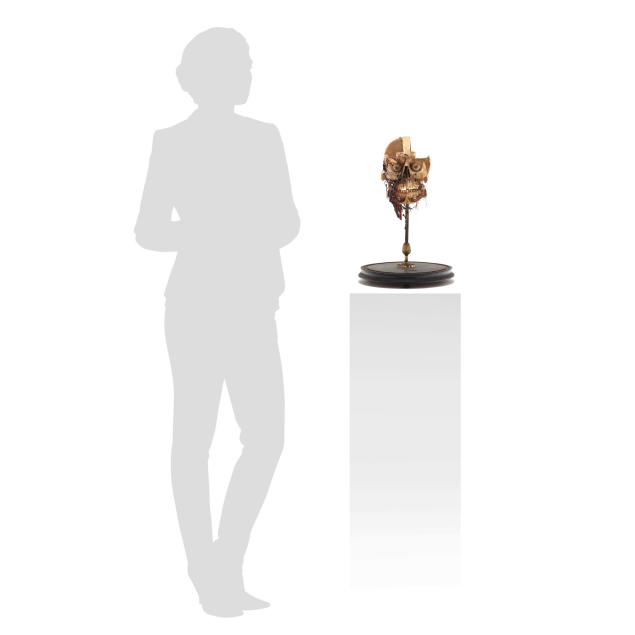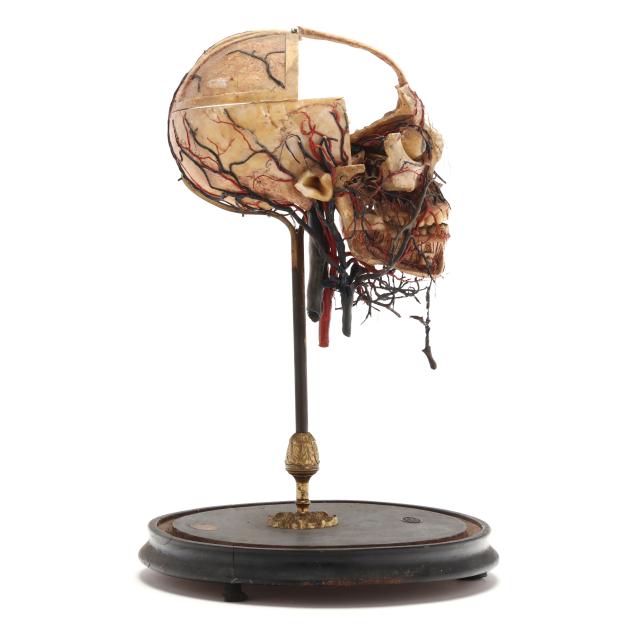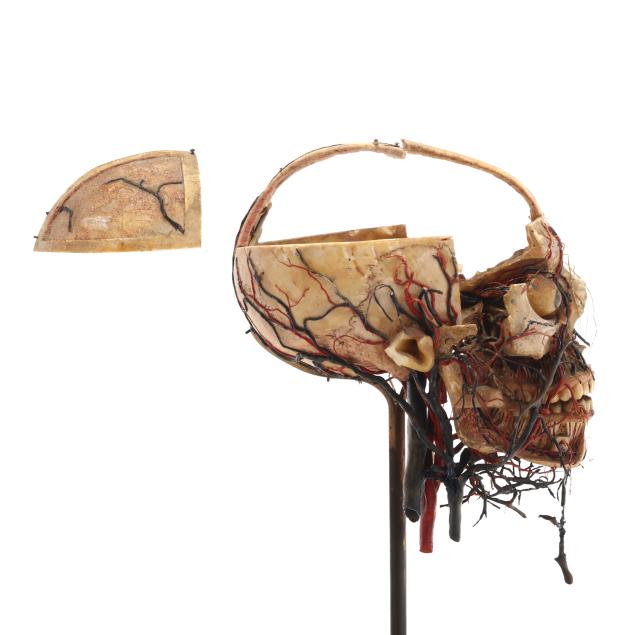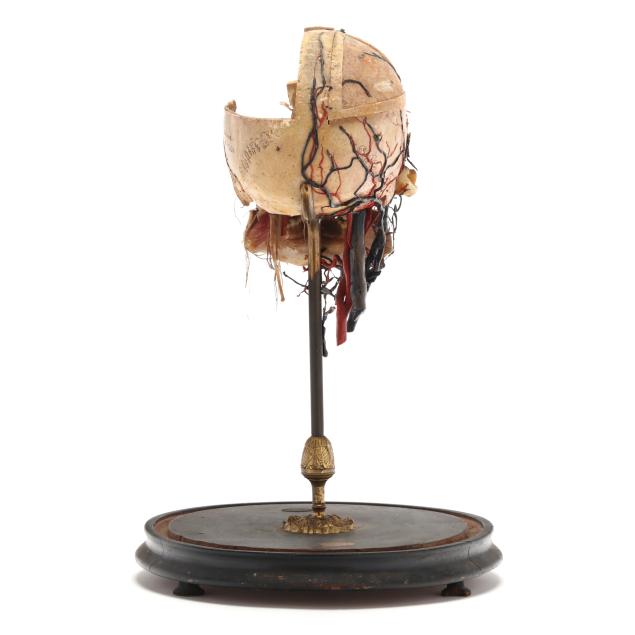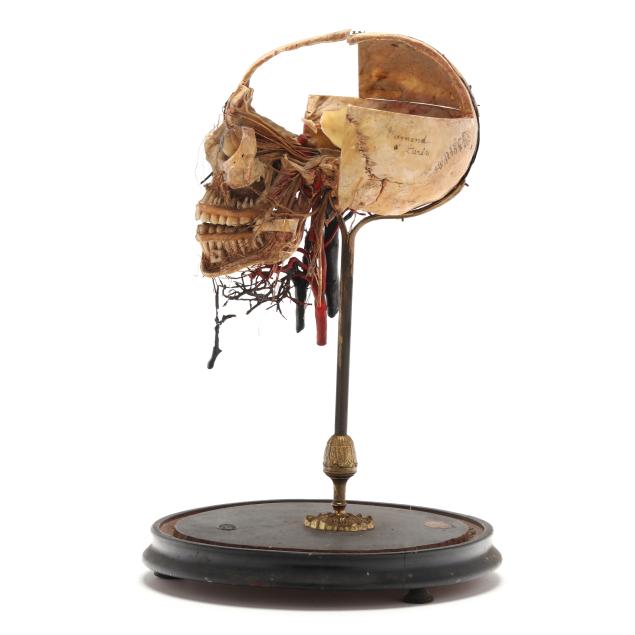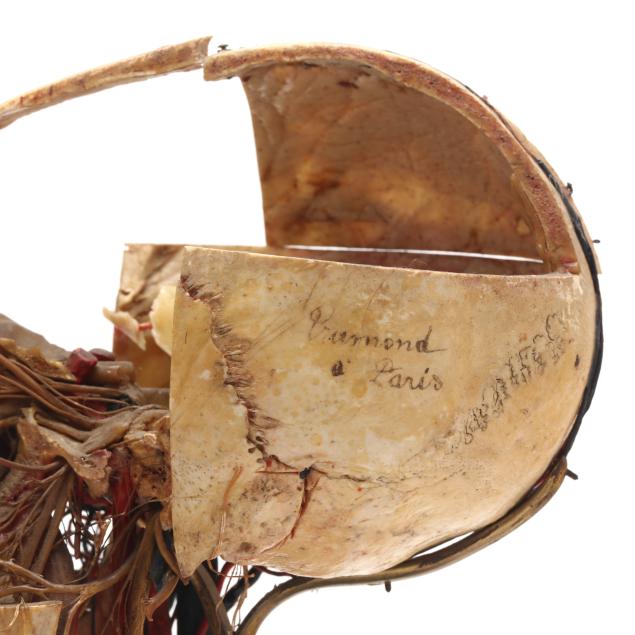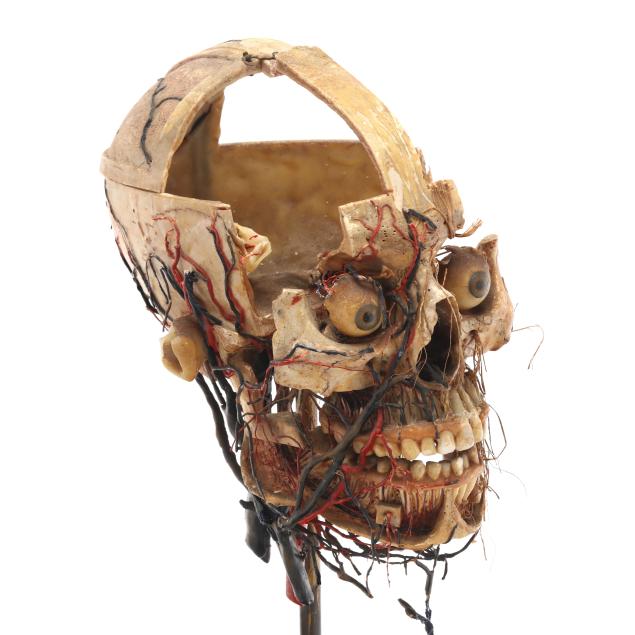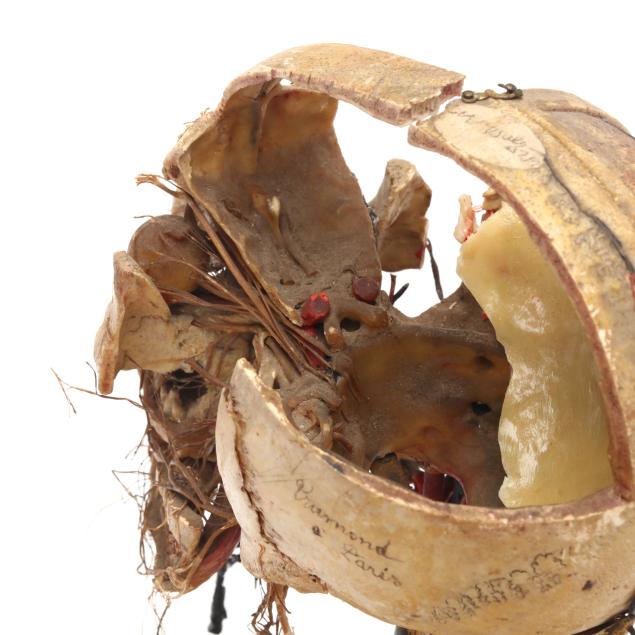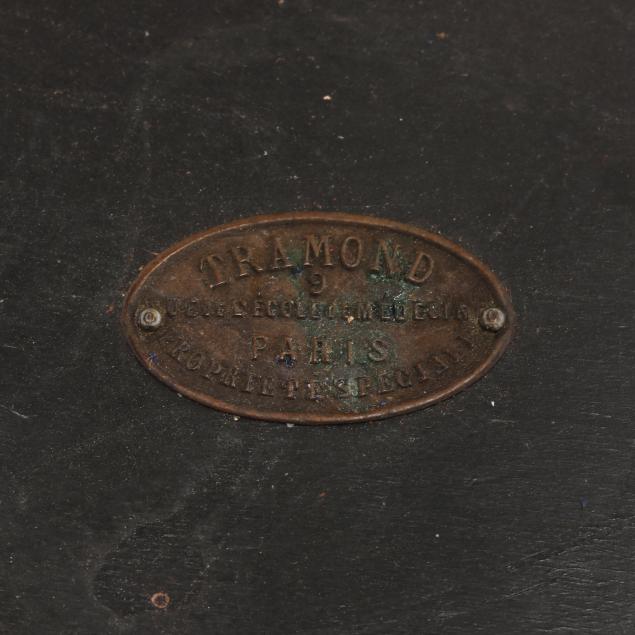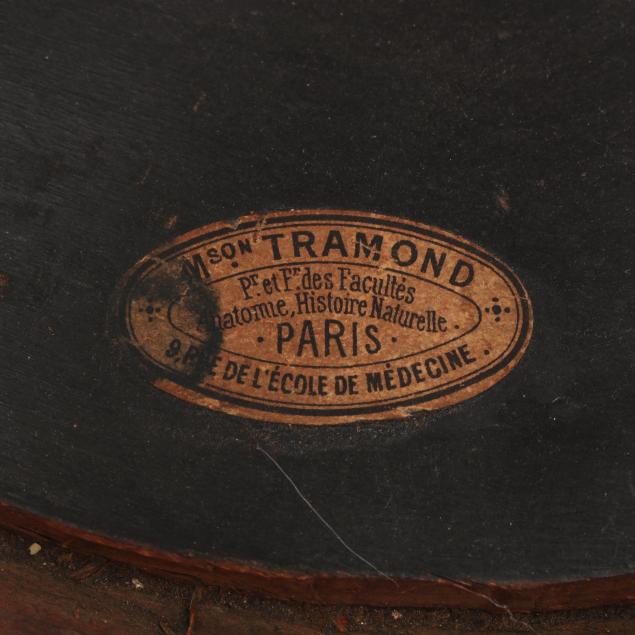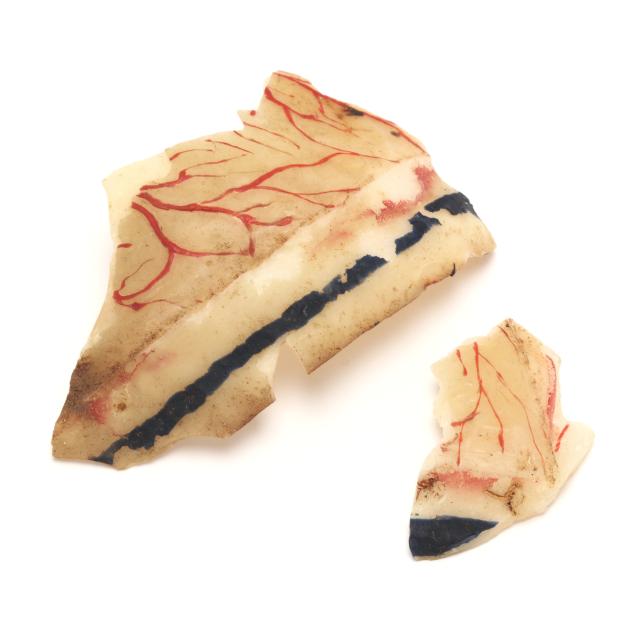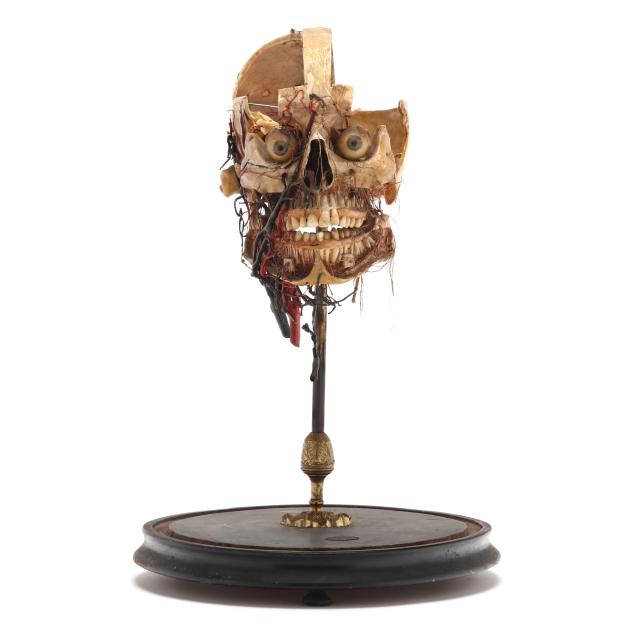
Lot 3039
Maison Tramond, Anatomical Display Model of a Dissected Human Skull
Explore more items like this one.
Visit our Scientific Instruments Department Scientific InstrumentsLot Details & Additional Photographs
16 1/2 x 10 1/2 x 10 1/2 in.
By Descent of the late Freda Fielding O’Leary, Ireland
This skull display is just one example of anatomical models that were manufactured as a collaboration between sculptors and anatomists to benefit European medical schools and their students beginning in the 18th century. Paris became a major producer of these models in the 19th century - a notable manufacturer being the Vasseur‐Tramond workshop. Founded by Pierre Vasseur, he was soon joined by his son‐in‐law Gustave Tramond in 1878. The Maison Tramond was known for the quality of its osteological, anatomical and ceroplasty preparations, many of which are still displayed today in several museums and university settings including the collections of the University of Melbourne; the University of Cambridge; the Museum Vrolik in Amsterdam; and the University of Edinburgh, among others.
Several parts of the skull are fully or partially detached with some areas of bone loss; some scattered surface wear including paint and wax losses on skull and veins, some later paint touch ups; scuffing to base; without glass cloche.
